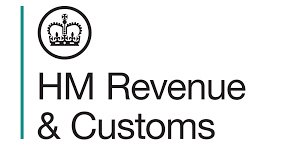HMRC SDLT: Overpayment Relief: Discovery Assessments – Archived Information Page
SDLTM54200 – Overpayment Relief: Discovery Assessments
This page provides information on overpayment relief and discovery assessments. It has been archived, indicating that it is no longer actively updated. The content is intended to guide individuals on how overpayment relief works and the principles behind discovery assessments.
- Archived page on overpayment relief and discovery assessments
- Guidance on the principles of overpayment relief
- Explanation of discovery assessments
- Not actively updated
“`

Read the original guidance here:
HMRC SDLT: Overpayment Relief: Discovery Assessments – Archived Information Page
Overpayment Relief: Discovery Assessments
The process of discovery assessments is essential in determining whether you have overpaid stamp duty land tax (SDLT) due to an error or mistake. This article explains the key ideas and concepts surrounding overpayment relief through discovery assessments.
Understanding Discovery Assessments
A discovery assessment occurs when HMRC finds that a taxpayer has paid too much SDLT. This can happen for various reasons, including clerical errors or misunderstandings about tax rules. Overpayment relief allows you to reclaim excess tax that has been paid.
Key Principles
Here are the core concepts related to overpayment relief through discovery assessments:
- Discovery Process: When HMRC identifies a potential overpayment, they will conduct an inquiry and evaluate the circumstances surrounding your tax return.
- Assessment of Overpayment: RMRC analyzes information regarding the transaction and calculates whether there has indeed been an overpayment of SDLT.
- Time Limits: There are specific timeframes within which you must claim an overpayment. Generally, the claim must be made within four years of the transaction date.
When Does Overpayment Relief Apply?
Overpayment relief can apply in several situations, including but not limited to:
- Miscalculations: If there was an error in calculating the amount of SDLT due on the property purchase.
- Incorrect Rates Applied: Using the wrong rate of SDLT can lead to overpayment. For example, if the higher rates were applied inappropriately to a buyer who qualifies for relief.
- Changes in Circumstances: If a buyer’s status changes after the SDLT return has been submitted, this may affect the amount payable.
How to Claim Overpayment Relief
If HMRC has identified an overpayment of SDLT, follow these steps to claim relief:
1. Prepare Your Documentation
Gather all necessary documents related to your property transaction. This includes:
- Original SDLT return
- Transaction details
- Any correspondence with HMRC regarding the transaction
- Evidence of the error, if applicable
2. Submit a Claim
Once your documentation is ready, you can submit a claim. You typically do this as part of your normal SDLT return. Specify that you are claiming overpayment relief and provide all relevant information.
3. Await HMRC’s Decision
After submitting your claim, HMRC will review the information provided. They may contact you for further details if needed. The time taken for processing can vary depending on the complexity of your case.
4. Receivable Refund
If HMRC agrees that you have overpaid SDLT, they will process a refund. You will receive your overpayment back, usually within a few weeks.
Common Questions About Overpayment Relief
Here are some frequently asked questions regarding overpayment relief and discovery assessments:
What if I disagree with HMRC’s Assessment?
If you believe that HMRC has made an incorrect assessment, you have the right to appeal. You must do this within a specific timeframe, usually 30 days following HMRC’s decision. Prepare to provide evidence supporting your case.
Can I Claim Overpayment Relief for Past Years?
You can claim relief for overpayments from previous years, as long as you stay within the four-year claim limit. Make sure you have the necessary documentation to support your claim.
What Happens if I Miss the Claim Deadline?
If you miss the deadline to claim overpayment relief, you might not be able to get a refund. Therefore, it is essential to keep track of your SDLT payments and be aware of deadlines.
Examples of Overpayment Scenarios
Understanding how overpayments can occur helps clarify the importance of monitoring your transactions:
Example 1: Miscalculation
Suppose you purchased a property for £400,000, and you mistakenly calculated your SDLT using the wrong property band rate. Instead of paying £10,000, you accidentally paid £12,500. After reviewing your case, HMRC agrees to refund you the £2,500 overpayment.
Example 2: Incorrect Rate Application
You purchased a buy-to-let property for £300,000, but due to a misunderstanding, you used the higher rate of SDLT meant for additional properties. If the proper rate should have been 5%, resulting in an SDLT payment of £15,000 instead of £18,000, you can claim back the £3,000 difference as an overpayment.
Example 3: Change of Status
If you initially were a first-time buyer but subsequently purchased a property that should qualify you for relief, the tax can be recalculated. If the SDLT based on the full amount was £8,000, and you are entitled to a first-time buyer relief of £3,000, you could reclaim this overpayment.
Consequences of Not Addressing Overpayment
Failing to address an overpayment can lead to financial repercussions. You could be left with less money than you should have after a transaction, which could impact your ability to make future investments or purchases.
Further Considerations
Always keep updated about SDLT rates and possible exemptions that may apply. Additionally, seeking professional advice could be wise to ensure your tax return is accurate, helping you avoid overpayment situations in the first place.
Final Thoughts
Managing your SDLT payments accurately is vital for your financial well-being. By staying informed and proactive about claims and relief opportunities, you can ensure that you do not overpay and can rectify any potential mistakes through the discovery assessment process.
If you find yourself in a situation where you believe you’ve overpaid SDLT, follow the outlined steps, gather your documentation, and submit your claim promptly. For additional guidance or assistance, you can consult HMRC’s official resources or seek expert advice.
For more information, you may wish to visit SDLTM54200 – Overpayment relief: Discovery assessments.







